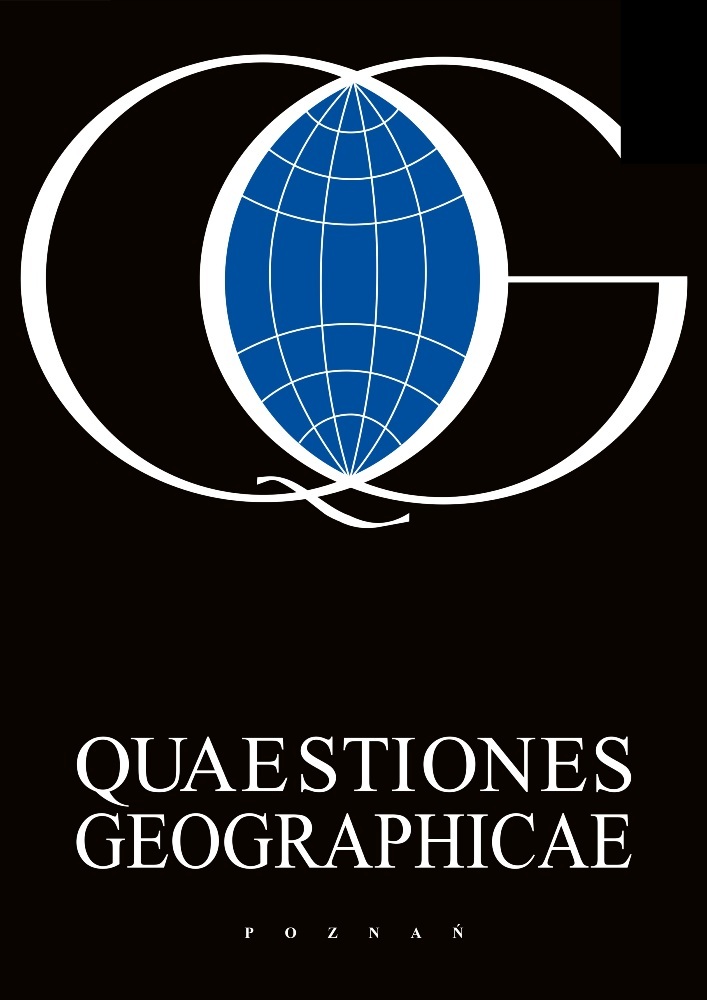Abstract
Knowledge of how land cover has changed over time improve assessments of the changes in the future. Wide availability of remote sensed data and relatively low cost of their acquisition make them very attractive data source for Geographical Information Systems (GIS). The main goal of this paper is to prepare, run and evaluate image classification using a block of raw aerial images obtained from Digital Mapping Camera (DMC). Classification was preceded by preparation of raw images. It contained geometric and radiometric correction of every image in block. Initial images processing lead to compensate their brightness differences. It was obtained by calculating two vegetation indices: Normalized Difference Vegetation Index (NDVI) and Green Normalized Vegetation Index (gNDVI). These vegetation indices were the foundation of image classification. PCI Geomatics Geomatica 10.2 and Microimages TNT Mips software platforms were used for this purpose.
References
Belward A., 1996. The IGBP-DIS global 1 km land cover data set “DISCover” - Proposal and implementation plans. Report of the Land Cover Working Group of the IGBP-DIS. IGBP-DIS Working Paper, No. 13. Stockholm.
Campbell J.B., 2007. Introduction to Remote Sensing. 4th ed. Guilford Press, New York.
Darwin R., Tsigas M., Lewandrowski J. & Raneses A., 1996. Land use and cover in ecological economics. Ecological Economics, 17: 157-181. DOI: https://www.doi.org/10.1016/S0921-8009(96)80004-8.
DMC II - Camera System - product comparison sheet, 2010. Z/I Imaging Intergraph, digitally accessible from: http://www.intergraph.com/photo/ia.aspx.
Harris P.M. & Ventura S.J., 1995. The integration of geographic data with remotely sensed imagery to improve classification in an urban area. Photogrammetric Engineering and Remote Sensing, 61: 993-998.
Im J., Jensen J.R. & Hodgson M.E., 2008. Optimizing the binary discriminant function in change detection applications. Remote Sensing of Environment, 112: 2761-2776.
Konecny G., 2003. Geoinformation. Remote sensing, photogrammetry and geographic information systems. Taylor and Francis, London.
Lu D. & Weng Q., 2009. Extraction of urban impervious surfaces from IKONOS imagery. International Journal of Remote Sensing, 30: 1297-1311.
Meyer W.B. & Turner II B.L., 1992. Human Population Growth and Global Land Use/Land Cover Change. Annual Review of Ecological Systems, 23: 39-61.
Thomas N., Hendrix C. & Congalton R.G., 2003. A comparison of urban mapping methods using high-resolution digital imagery. Photogrammetric Engineering and Remote Sensing, 69: 963-972.
Townshend J.R.G., 1992. Improved global data for land applications. IGBP Report, No. 20. IGBP Secretariat/Royal Swedish Academy of Sciences, Stockholm.
Turner II B.L., Skole D. & Sanderson S., 1995. Land-Use and Land-Cover Change: Science and Research Plan. Stockholm and Geneva: International Geosphere-Bioshere Program and the Human Dimensions of Global Environmental Change Programme. IGBP Report, No. 35, HDP Report, No. 7).
Williams J., 2001. GIS Processing of Geocoded Satellite Data. Springer and Praxis Publishing, Chichester, UK.
Wulder M.A., White J.C., Coops N.C. & Butson C.R., 2008. Multi-temporal analysis of high spatial resolution imagery for disturbance monitoring. Remote Sensing of the Environment, 112: 2729-2740.
License
This content is open access.
